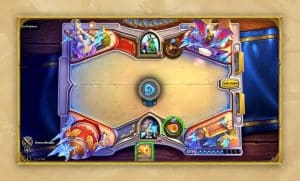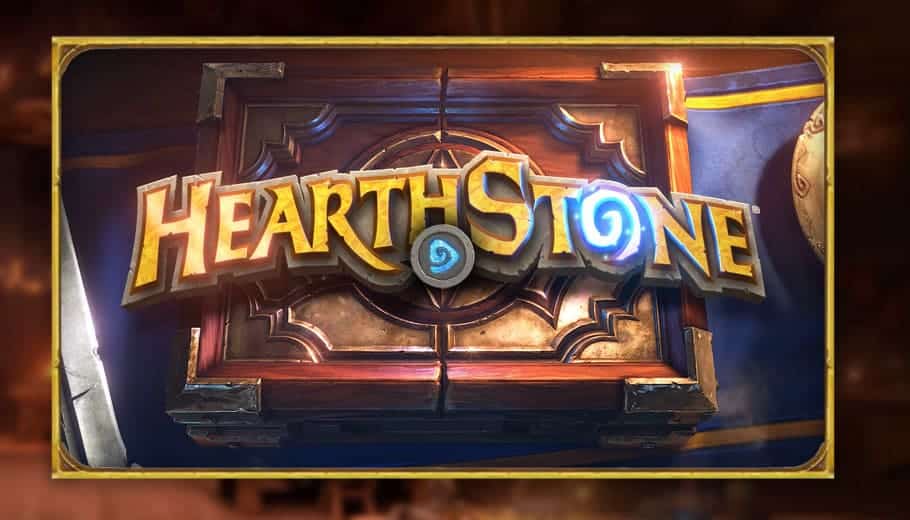Hearthstone, created by Blizzard Entertainment, a company out of Irvine, California, is a very popular digital card game. It is a fun blend of strategy, luck, and creativity. Building a stable and dependable deck is the base of success, as is true with any competitive card game. This is the case whether the player is aiming to dominate the ladder or simply enjoy friendly games. Deck creation might seem overwhelming from the jump. However, with a little advice, beginners can make decks that are competitive and, at the same time, fun to play. This guide will walk players through the basic steps needed to build a winning deck in the game of Hearthstone.
Understand The Hero Class
The first step in Hearthstone deck-building is to pick the hero class that a player will roll with. Each class in Hearthstone comes with a special set of cards along with a special Hero Power. The Hero Power will determine many of the play strategies that the deck will use. The right class selection is important. It will determine a lot of things, from the deck’s strategy to the card pool and even the overall play structure. These decisions will result in an epic deck or an epic disaster from the jump-off.
For example:
- Mage (Jaina Proudmoore) is powerful in spell-based decks. She deals direct damage through the use of spells such as Fireball and Frostbolt. Mage decks usually focus on controlling the board by removing enemy minions with spells. These decks also focus on setting up strong combos in the end stages of the game.
- Hunter (Rexxar) is an aggressive class. It is built around summoning minions and dealing damage directly to the opponent’s Hero instead of the opponent. The Hero Power itself targets the opposing player. The hunter’s Hero Power, for example, deals 2 damage to the opponent. This makes it a great choice for fast-paced and aggro decks.
- Priest (Anduin Wrynn) depends on healing and working the health of minions. These types of decks generally are more control-focused. They rely on things like spells such as Shadow Word: Pain to cancel out threats from foes and outlast their opponents.
As a beginner, it is really important for gamers to experiment with various classes to find the one that feels comfortable for them and their game style. Each class offers a distinct playstyle, and as the gamer gets a better understanding of the experience, they will form an outlook of how each class approaches the game. Once they settle on a class that matches their preferences, they can start building a deck around the specific class’s strengths.
Focus on a Core Strategy

Every successful deck in Hearthstone is built around a core strategy. This strategy should be clear and consistent throughout the deck. That will influence the types of cards that are included and how the gamer will play each match. While there are many types of strategies in the game, most decks fall into one of three broad categories:
- Aggro (Aggressive): Aggro decks strive to win the game as quickly as possible. They often do this by applying constant pressure on the opponent, making it hard for them to respond adequately. These decks depend on low-cost, high-damage minions and spells to deal damage early and often in an attempt to “pwn” the enemy. The idea is to overwhelm the opponent before they can set up their defenses and become a problem. Popular aggro decks include things like Face Hunter and Aggro Druid, which focus on bombarding the board with cheap minions and dealing damage directly to the opponent’s Hero quickly.
- Control: Way different from the aggro deck strategy, control decks take a slow and planned approach to game play. Control players, for example, focus on survival during the early game. This is done by using things like removal spells and defensive minions to remove threats. With the goal of outlasting their opponent and winning through powerful late-game cards, these gammers are patient. Control decks often feature high-cost cards, much like Ragnaros the Firelord or Ysera, which can single-handedly win the game if played at the right moment and when things line up properly. Control Warrior and Control Priest are perfect examples of this archetype.
- Midrange: Midrange decks sit comfortably between aggro and control. They are always trying to establish a strong board presence by playing efficient, value-driven minions in the mid-game period. Midrange decks normally aim to control the rhythm of the game. They do this by outpacing aggro decks with stronger minions while putting consistent pressure on control decks before they can deploy their late-game threat cards. Midrange Hunter and Midrange Shaman are great examples of this play style.
For beginners, it is often easier to start with an aggro or midrange strategy of game play. These options tend to be more straightforward and forgiving of card pulls. Aggro decks, in particular, are great for learning how to play on a curve, manage the resources that are available, and apply pressure to the opponent in various card availability scenarios. Once the gamer has mastered these basics, they can move on to more complex control strategies and game play.
Always Maintain a Balanced Mana Curve
An important aspect of deck-building in Hearthstone is maintaining a balanced mana curve. The mana curve is talking about the distribution of cards in the deck based on their mana cost. This is important because it usually determines when the player will be able to play these cards. A well-balanced curve ensures that the gamer always will have something to play at every stage of the game. This goes for the game from turn one all the way to the late game play.
Here’s a typical breakdown:
- Low-Cost Card Options (1-2 Mana): These cards are essential for establishing an early board presence and dealing with the opponent’s minions. Low-cost minions like Fiery Bat or spells like Frostbolt allow the gamer to get an early start in the encounter and gain control of the board. In aggro decks, these cards are often the backbone of the game play strategy.
- Mid-Cost Card Options (3-5 Mana): Midrange cards are the meat of most decks. That is very true because they will be providing powerful minions and spells that can swing the game into the player’s favor. Cards like Fire Elemental or Savannah Highmane are a couple of great examples of midrange threats that can dominate the board if left unchecked.
- High-Cost Card Options (6+ Mana): High-cost cards serve as the player’s finishers. These are the cards that can and often turn the tide of the game in the gamer’s favor or even secure victory outright. Examples of these include The Lich King or Alexstrasza. However, the gamer should be careful not to include too many high-cost cards. They really can clog a person’s hand early on when they are in need of more affordable options to survive until more resources are available to them.
The path to a successful deck is finding a balance between these three categories. If the deck has too many low-cost cards, the player might run out of steam in the mid-to-late game and not gain enough power to finish. On the other hand, a deck filled with high-cost cards will leave the individual vulnerable in the early game. A well-curved deck will allow the person to consistently play cards on each turn, increasing the chances of maintaining control over the game from move one to the final blow. As a beginner, people should try using a simple mana curve structure with about 10-12 low-cost cards, 8-10 midrange cards, and 3-5 high-cost cards.
Prioritize Synergy
In Hearthstone, having synergy between cards can greatly improve the strength of the overall deck and its ability to go from okay to epic with a simple card draw. Synergy means how well certain cards work together to create amazing combinations and create dominating scenarios. Some synergies are built directly into the game play with the presence of certain cards. However, others require a better understanding of the card pool balance and certain mechanics which interact with and boost one another.
For example:
- Beast Synergy (Hunter): Many Hunter cards have abilities that trigger when the player has other Beast minions on the board. Cards like Kill Command deal additional damage if the gamer controls a Beast. This card makes it more effective in decks filled with Beast minions like Scavenging Hyena or Dire Wolf Alpha.
- Elemental Synergy (Mage/Shaman): Elemental cards usually reward the player for playing another Elemental in the previous turn. An example of this is a card like Servant of Kalimos becoming much stronger if the strategy includes consistently playing Elementals. That means building a deck around these cards can and often does lead to powerful turn-by-turn effects.
Synergy is not just limited to specific minion types or tribes. The deck creator can also make decks that synergize around mechanics. An example of this would be like using spell-based decks for Mages or weapon-based decks for Warriors. When the designer includes cards that enhance each other, they can create a deck that feels unified and is consistently powerful. As a beginner, players should look for simple synergies within the chosen class. Many basic cards have synergy built in. This allows the creator to experiment with combos without needing to rely on really advanced strategies.
Include Removal and Utility Cards
No matter how aggressive or defensive the deck may be, people will always need tools to deal with the opponent’s threats. That is going to be where removal spells and utility cards come in play. These cards allow the gamer to eliminate dangerous enemy minions, maintain board control, and outlast the opponent when the game does not go according to plan, which is often the case. Card pulls are luck of the draw in many situations.
- Removal Spells: These are the most direct tools for dealing with enemy minions. Spells like Polymorph or Execute can neutralize powerful threats with ease, while area-of-effect (AoE) spells like Flamestrike or Brawl can clear an entire board of all smaller minions. If the deck is coming at the encounter with a decent amount of removal spells, this will ensure that the player board will not become dominated by the opponent’s board.
- Utility Cards: Utility cards often give the person a boost in the ability to adapt and recover resource needs during the game play. An example of this occurring is drawing cards like Arcane Intellect. This card will help to maintain a steady grip. Also, healing cards like Antique Healbot can keep the player alive in intense situations long enough to push through and bounce back. These cards often do not fit directly into the core strategy. However, they are essential for keeping the player in the game when things get tough.
Deck builders should make sure they include a good mix of removal and utility cards into the deck. Having these tools at the gamer’s disposal will give them more options during each game and allow them to adapt to different situations that come into play.
Avoid Overcomplicating The Deck
As a beginner, it can be tempting to include all of one’s favorite cards in a single deck. However, this usually leads to overcomplicated strategies that are difficult to execute because needed card draws are not always perfect. Instead, a focus should be on building a streamlined deck with a clear and simple game plan that includes alternate possibilities. For example, if one is building an aggro Hunter deck, prioritizing low-cost Beast minions and direct damage spells should be a must. Deck creators need to void adding too many high-cost cards or spells that do not directly contribute to the overall core strategy of the deck.
Similarly, if the player is building a control deck, the focus should be on defensive minions and removal spells rather than trying to do all the things at once. Simplicity is key when a player is starting out in Hearthstone. A straightforward deck with a consistent strategy will perform more reliably than a deck that is filled with grand ideas. Once the gamer has mastered the basics, they can then start experimenting with more complex decks and strategies that keep the game interesting and continuously progressing.
Test, Tweak, and Grow
A final consideration is to remember that no deck is perfect right out of the gate. Once the deck is built, it is going to be important to test it in action. The gamer should play several games, taking note of what works and what does not. Are there cards that are rarely played? Does the player often find themselves without the right moves in critical moments of the encounters? Getting this type of information allows the player to tweak the deck and improve it over time.
Gamers should not be afraid to make adjustments to the cards in the set. Part of the fun in Hearthstone is refining the deck to suit the evolving meta or personal play style as it evolves. As the player gains in-game experience and unlocks more cards, they will have even more options to enhance the strategy.
Hearthstone Endless Opportunities
Creating a successful deck in the game Hearthstone is a method that mixes creativity, design, and adaptability with testing and making alterations as experience is gained during play. By understanding the class, focusing on a core strategy, and maintaining a balanced mana curve, the creator of the deck can become successful quickly, even as a beginner to the game. Also, including synergy, removal, and utility can create a deck that will help the player succeed in casual and competitive play alike.
Most importantly, everyone would do well to remember to have fun and experiment with different ideas. Switch things up and find what works for you in the environment. At its base, this is a game. Hearthstone offers endless opportunities for deck-building. Every match is a chance to learn and grow as a player. Every encounter is a chance to gain insight into the deck’s strengths and weaknesses. So, get out there, craft a deck, and may the card draws be forever in your favor!
For More Great Content
Craving top-tier content that covers it all? From electrifying sports highlights and insider entertainment news to expert gaming tips and sharp betting advice, we’ve got you covered. Dive into our curated articles to stay ahead of the game with the latest sports action, uncover the hottest trends in entertainment, and get the lowdown on gaming strategies that could level up your play. Plus, our betting advice will sharpen your edge and boost your chances of winning big. Whether you’re looking to stay updated or gain a competitive edge, our content is your go-to source for all things exciting and relevant. Don’t miss out—explore now and power up your knowledge! Follow us on Twitter/X @TotalApexSports, to stay informed.


